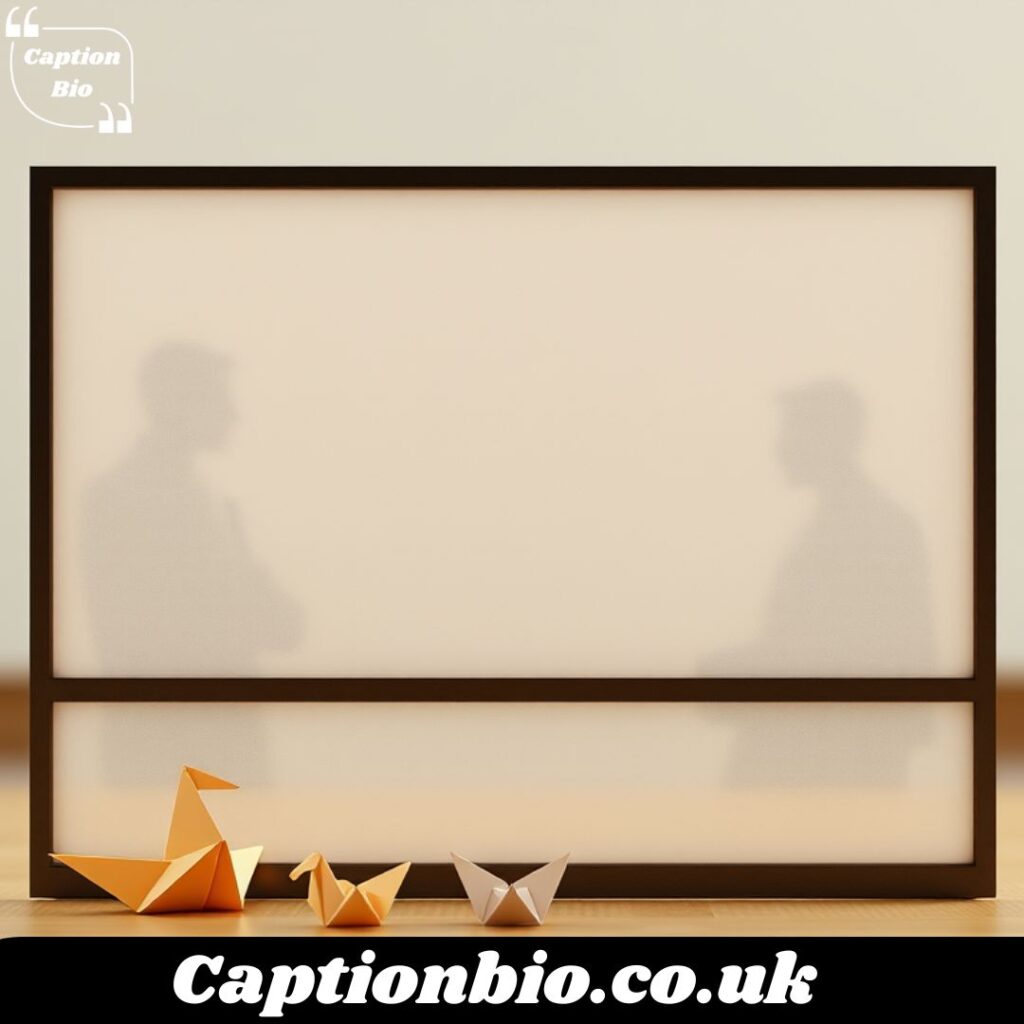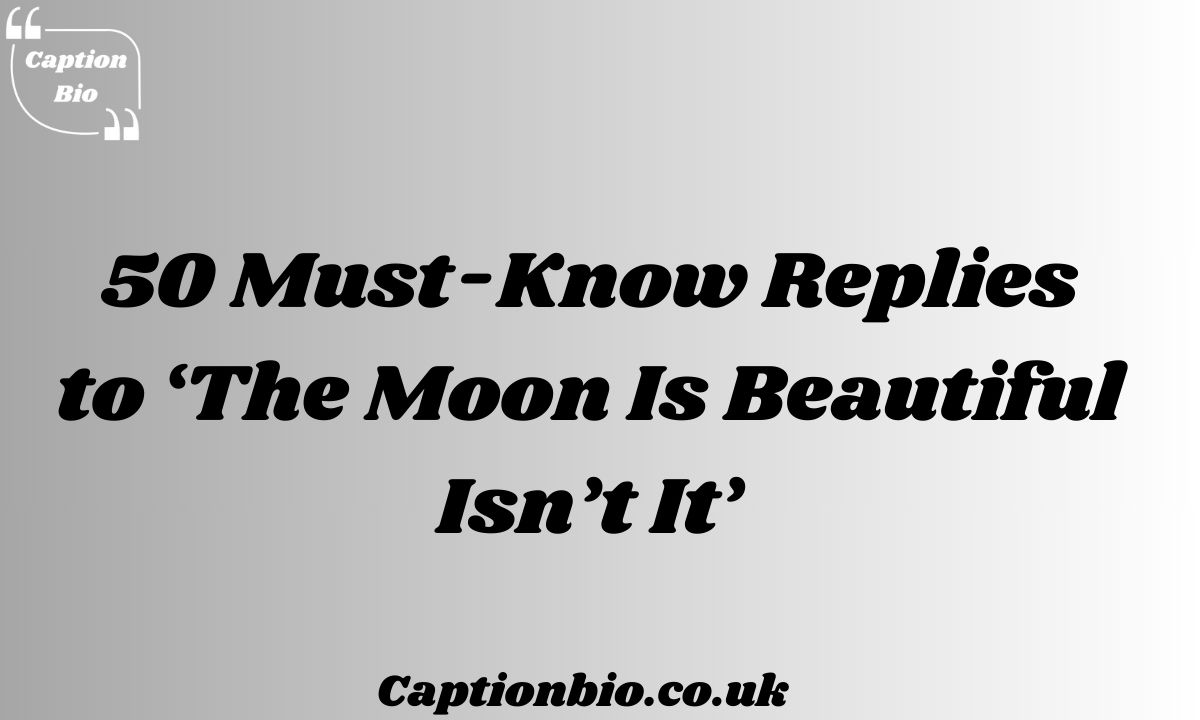The phrase “The moon is beautiful, isn’t it?” carries special meaning in Japanese culture. It originated from a translation of “I love you” by writer Natsume Soseki. Today, this indirect confession continues to charm people worldwide.
Responding appropriately can either acknowledge romantic feelings or gently redirect the conversation. These fifty responses offer options for every situation, whether you wish to return the sentiment or keep things friendly.
The Moon is Beautiful, Isn’t It?: Meaning & It’s History
- 🎭 Originated from Japanese writer Natsume Soseki’s translation of “I love you” in the Meiji era
- 🌸 Reflects Japanese cultural preference for indirect emotional expression
- 🗣️ Considered a poetic way to confess romantic feelings without saying them directly
- 📚 Soseki told students a direct translation was too blunt for Japanese sensibilities
- 💫 The phrase captures appreciation of beauty while implying deeper emotions
- 🇯🇵 Demonstrates the value of subtlety in Japanese communication
- 🔄 Creates emotional connection through shared observation of nature
- 🌉 Often used in romantic anime and manga scenes for confession moments
- 🌠 Relies on context and shared understanding between speakers
- 💭 Allows the listener to interpret the speaker’s true feelings
- 🤝 Creates intimate moment without risking embarrassment from direct rejection
- 📝 Literature professors still teach this as classic cultural translation example
- 🗓️ Has remained relevant in Japanese culture for over a century
- 🌃 Typically spoken during evening moments while viewing the moon together
- 🧠 Psychologically creates emotional safety through plausible deniability
- 💌 Works as a “trial balloon” for gauging romantic interest
- 🌊 Flows with Japanese aesthetic appreciation of natural beauty
- 🔍 Reveals the cultural gap between Western directness and Eastern indirectness
- 🌏 Has gained international recognition through global popularity of Japanese media
- 👁️ Invites the listener to see the world through the speaker’s appreciative eyes
🗨️ 25 Must-Know Replies to “The Moon Is Beautiful, Isn’t It?”

- 🌙 “Yes, and I find it even more beautiful because I’m sharing this moment with you”
- ❤️ “Indeed, just like my feelings for you that continue to grow each day”
- 🌟 “The stars pale in comparison to how brightly you shine in my life”
- 🤔 “I was just thinking the same thing… what a coincidence”
- 😊 “It reminds me of the first night we met under this same sky”
- 🌹 “Not as beautiful as the person standing beside me right now”
- 📸 “This moment deserves to be captured and treasured forever”
- 🍃 “Like the moon, my feelings for you remain constant through changing seasons”
- 🌄 “But the sun will rise on new possibilities for us tomorrow”
- 🧩 “It feels like the final piece of a perfect evening with you”
- 🔮 “I wonder what the moon knows about our future together”
- 💫 “Yes, like the way you’ve illuminated my darkest nights”
- 👀 “I’ve been looking at you more than the moon, to be honest”
- 🌊 “Its reflection on water reminds me of how deeply I see myself in you”
- 🎭 “The moon wears many faces, but my feelings for you remain constant”
- 🚶 “Shall we take a walk and enjoy this moonlight together?”
- 🏠 “It makes me think about creating a home with you someday”
- 🌉 “This bridge between day and night feels like the connection we share”
- 🍵 “Would you like to continue this conversation over tea?”
- 🧠 “The moon inspires such poetic thoughts, especially when I’m with you”
- 🎵 “This moment deserves a soundtrack—may I play you a song?”
- 🌿 “Like plants turn to moonlight, I find myself drawn to you”
- 🛤️ “I hope our paths continue together under many more beautiful moons”
- 💭 “I was just thinking how perfectly the moonlight highlights your smile”
- 🌠 “I’d choose a thousand nights like this if it meant spending them with you”
👥 Non-Verbal Replies to “The Moon is Beautiful, Isn’t it?”
- 😍 Maintaining eye contact with a warm, genuine smile that reaches your eyes
- 🤲 Gently taking their hand and giving it a soft, meaningful squeeze
- 🤗 Moving closer and leaning your head against their shoulder comfortably
- 📱 Taking a selfie together with the moon in the background as keepsake
- 👂 Tilting your head slightly as you listen, showing complete attention
- 💃 Initiating a slow dance under the moonlight without saying a word
- 🧣 Adjusting their scarf or jacket, showing tender care and intimacy
- 📸 Taking a photo of them gazing at the moon to capture the moment
- 🌬️ Releasing a contented sigh while nodding in peaceful agreement
- 👀 Glancing between the moon and their eyes with meaningful looks
- ☕ Offering them a warm drink you brought in a thermos to share
- 🫂 Opening your arms slightly, inviting them for a warm embrace
- 🧥 Placing your jacket around their shoulders if there’s a chill
- 💐 Picking a nearby wildflower and offering it as a spontaneous gift
- 👉 Pointing out constellations near the moon, creating shared discovery
- 👨👩👧 Creating a shadow puppet show against the moonlight on a nearby wall
- 🎨 Sketching a quick drawing of the moon scene in a pocket notebook
- 🤳 Turning their face gently toward yours with a soft touch on the cheek
- 📝 Writing “yes, it is” in the sand or on a foggy window nearby
- 🎁 Revealing a small surprise gift you’ve been waiting for the right moment to share
Nod and smile warmly
A simple nod paired with a genuine smile creates an immediate bond. This universal gesture transcends language barriers, conveying understanding and acceptance without a single word. It acknowledges the other person’s presence and opens the door to deeper connection.
Gently take their hand and look at the moon together
Physical touch combined with shared wonder creates profound intimacy. As your fingers intertwine and your gazes align toward the luminous moon, a wordless story unfolds between you. This moment of cosmic appreciation becomes uniquely yours to treasure.
Share a soft, appreciative glance
When eyes meet with genuine appreciation, something magical happens. A fleeting look can express gratitude, understanding, and affection more powerfully than elaborate speeches. These brief connections often become our most cherished memories.
Give a small, affectionate squeeze if appropriate
A gentle pressure of hand against hand communicates reassurance and presence. This subtle gesture says “I’m here” when words would feel excessive. It offers comfort during moments of both joy and vulnerability.
Show a contented smile and let the silence speak for itself
True connection thrives in comfortable silence. A peaceful smile acknowledges the beauty of simply being together. When two souls feel secure enough to enjoy stillness, no words are needed to fill the perfect completeness of the moment.
The Psychology of Japanese Indirect Communication

Japanese indirect communication stems from collectivist values that prioritize group harmony over individual expression. This communication style helps maintain social cohesion by avoiding direct conflict and preserving face.
The concept of “wa” (harmony) underlies interactions, creating a culture where context, nonverbal cues, and implied meanings carry significant weight in everyday conversations.
- 🎭🤫 “Honne” (true feelings) and “tatemae” (public face) create dual communication layers that preserve social harmony.
- 🌊💨 Indirect expression flows like subtle air currents, felt rather than explicitly announced.
- 🤐🧠 Silence carries significant communicative weight, often conveying respect, contemplation, or disagreement.
- 👂💭 Listening between words becomes an essential skill, where pauses and tone reveal hidden meanings.
- 👁️🗨️🔎 “Sasshi” (anticipatory perception) allows Japanese communicators to intuit needs before they’re verbalized.
- 🌀🧩 Circular conversation patterns build context gradually rather than moving directly to the point.
- 🏮🌫️ Ambiguity serves as a protective social mechanism, allowing face-saving interpretation flexibility.
- 😶🌈 Non-confrontational refusals use vague language to soften potential relationship damage.
- 🌸🌱 “Amae” (dependency) influences communication by creating unspoken expectations of care and understanding.
- 👥🔄 Group harmony (“wa”) takes precedence over individual expression or assertiveness.
- 🧘♀️🔄 Self-restraint (“enryo”) manifests as hesitation before speaking to ensure appropriateness.
- 🗣️👀 Context sensitivity determines communication style, with different approaches for in-group versus out-group interactions.
- 🪷📖 Cultural proverbs and metaphors provide indirect vehicles for delivering difficult messages.
- 📝✨ High literacy in non-verbal cues makes facial micro-expressions and body language crucial information sources.
- 🧠🔮 Anticipating others’ reactions before speaking shapes message delivery and content selection.
- 🏔️🌊 Status differences create vertical communication patterns where indirectness increases with power distance.
Psychological Insights
- 🧠💭 High-context communication relies on shared understanding, reducing the need for explicit statements.
- 🤐😶 Restraint in expression stems from valuing harmony and avoiding confrontation that could disrupt group cohesion.
- 👂🔍 Active listening skills are highly developed to detect subtle cues and unspoken intentions.
- 🌀🔄 Circular thinking patterns prioritize contextual understanding over linear, direct conclusions.
- 😌🙏 Emotional regulation through indirect communication helps maintain individual dignity in social situations.
- 🧩🔑 Decoding implicit messages becomes an intuitive skill developed through cultural immersion.
- 🎭🎪 Role adaptation in various social contexts influences how indirectly one communicates.
- 🌊☯️ Ambiguity is often intentional, creating flexible interpretation spaces that preserve relationship harmony.
- 👁️🗨️📝 Non-verbal literacy becomes heightened as subtle gestures carry significant meaning.
- 🛡️💫 Indirect communication serves as psychological protection against rejection or confrontation.
Impact on Relationships
- 🤝🌱 Trust deepens through the mutual understanding of unspoken boundaries and expectations.
- 🔄💞 Relationships evolve through careful observation rather than explicit negotiation of needs.
- 🧠❤️ Empathic intelligence develops as people attune to subtle emotional states without direct expression.
- 🔍👥 Social cohesion strengthens when group members skillfully navigate indirect communication patterns.
- 🌉🛤️ Communication gaps may emerge with those unaccustomed to reading between the lines.
- 🔄🗣️ Conflict resolution often happens through third-party mediation rather than direct confrontation.
- 🕊️🌈 Harmony preservation becomes prioritized over individual expression of dissenting views.
- 🧩🧵 Relationship boundaries remain flexible and negotiable through implicit understanding.
- 📊⚖️ Power dynamics influence how indirect communication flows between different social positions.
- 🌟✨ Meaningful connections often form through shared moments of unspoken understanding.
Conclusion
Japanese indirect communication represents a sophisticated system balancing social needs with personal expression. While challenging for outsiders, understanding these patterns offers insight into a culture that values harmony, context, and nuance.
Approaching these communication differences with curiosity rather than frustration opens doors to meaningful cultural exchange and deeper connections.

Jane Doe, founder of CaptionBio.co.uk, crafts heartfelt messages to inspire love, gratitude, and daily positivity. Let’s spread kindness through words!






